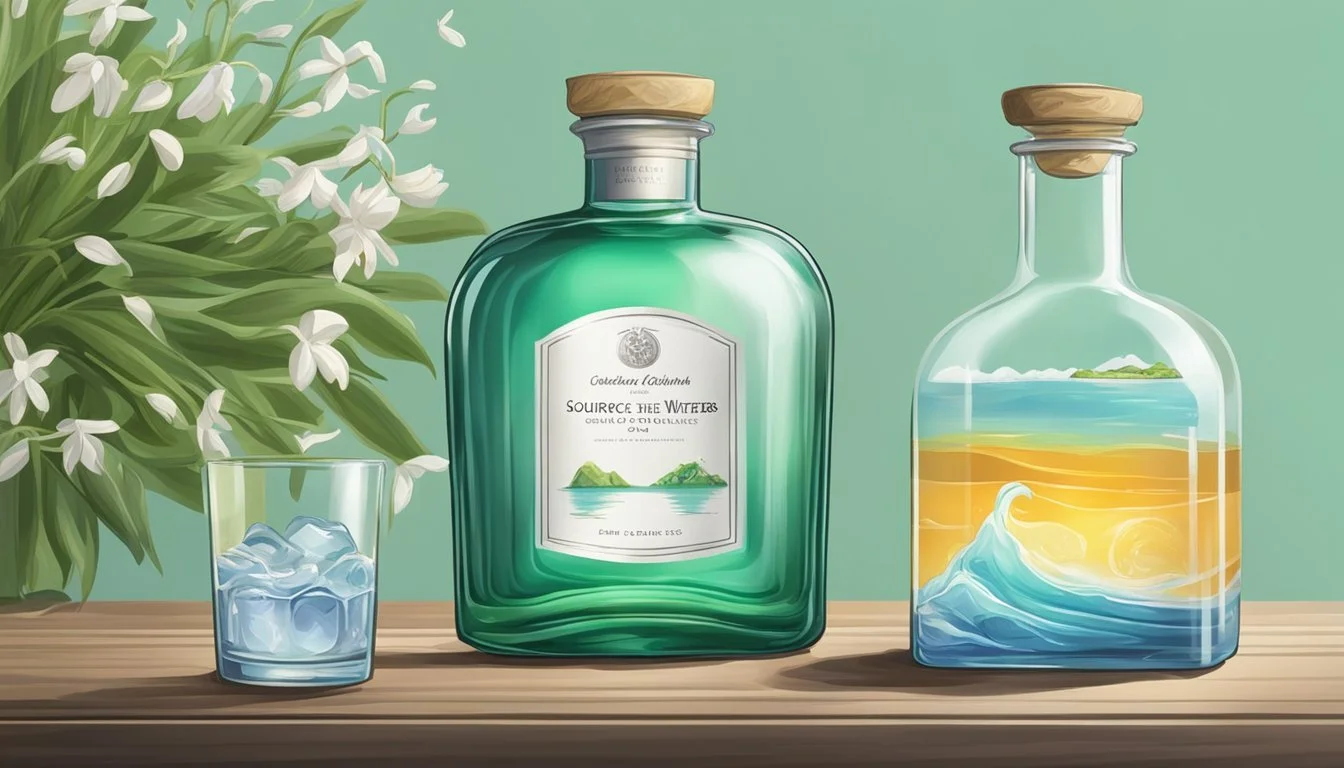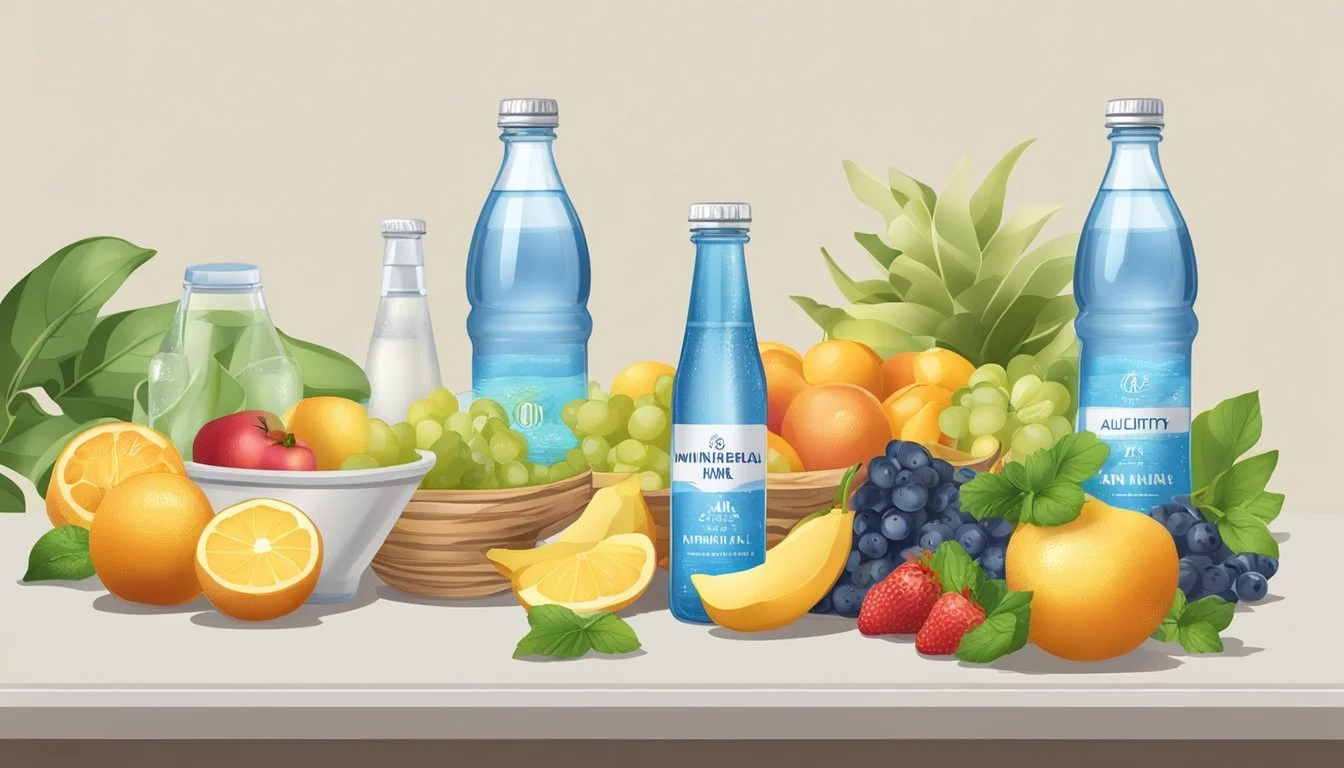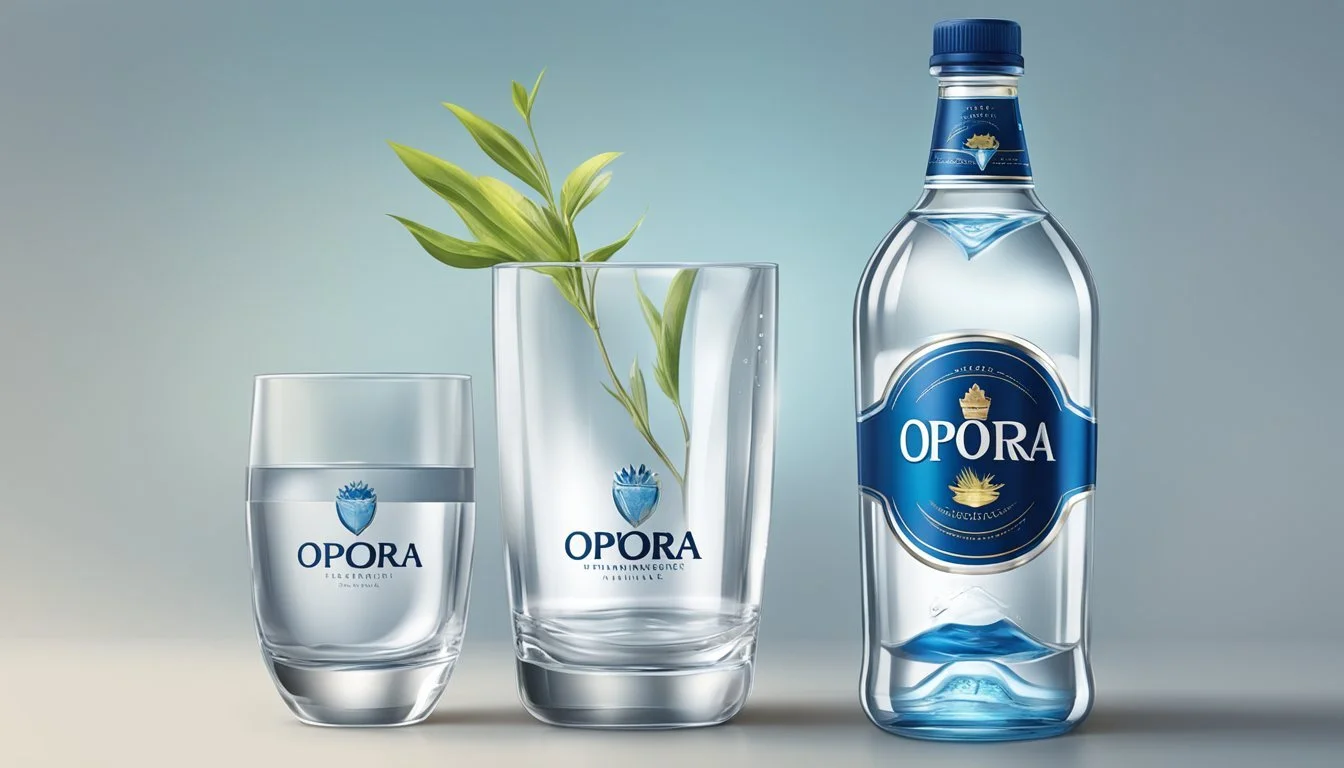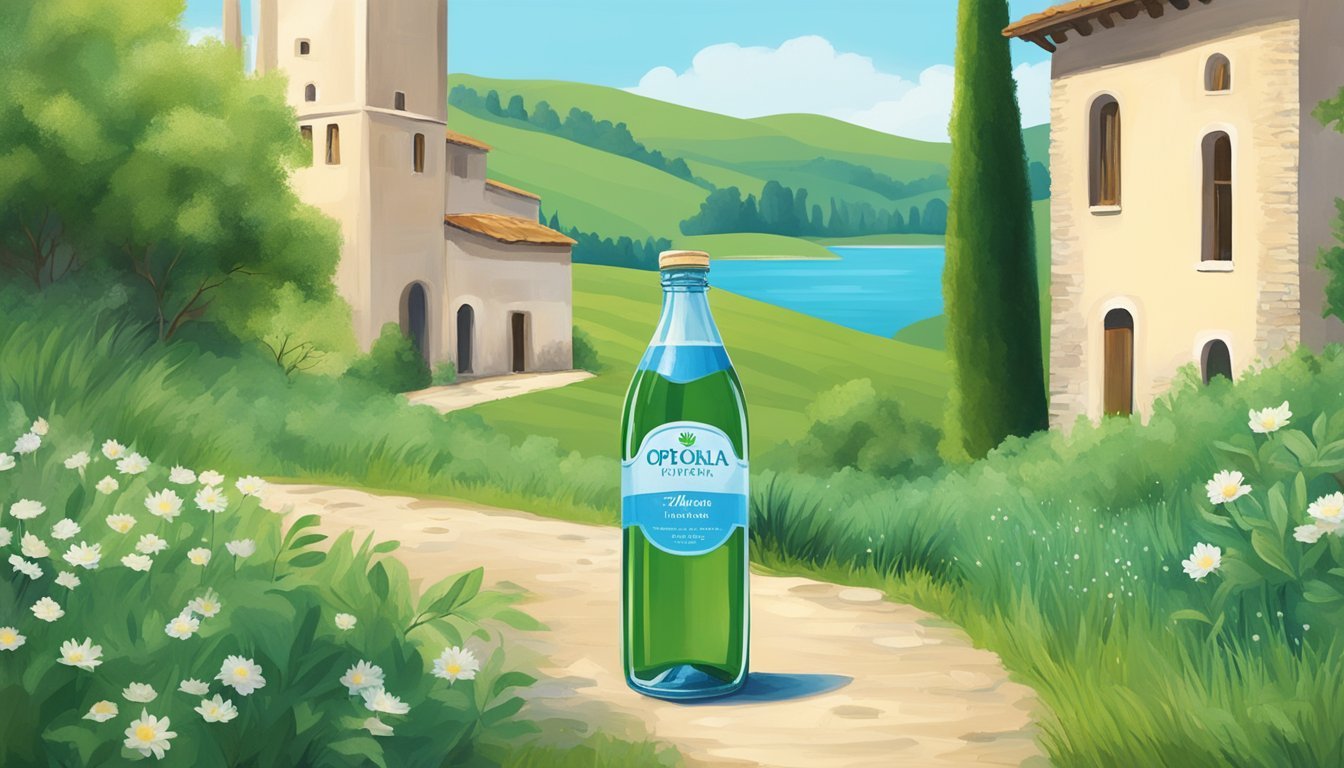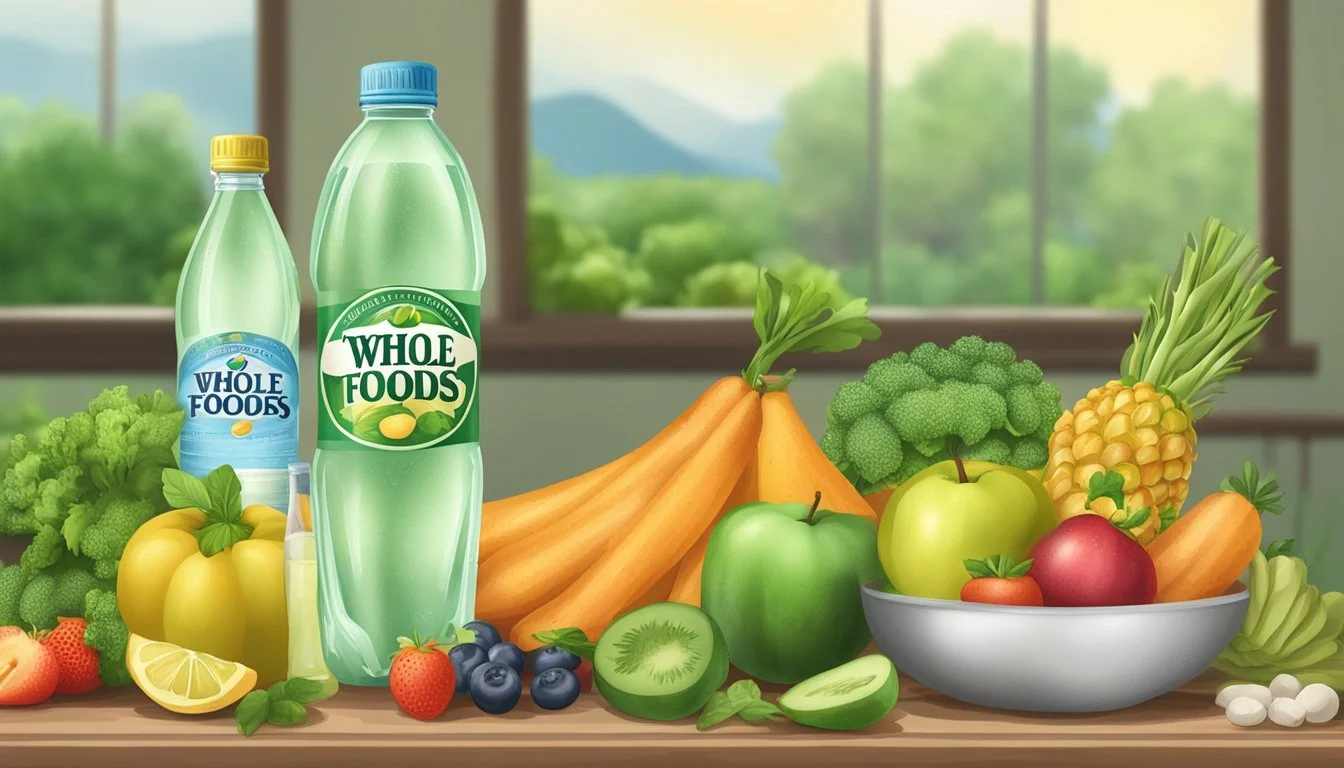Whole Foods Italian Still Mineral Water vs. Ophora
How Do They Compare?
When it comes to choosing between Whole Foods Italian Still Mineral Water and Ophora, two distinct options stand out in the bottled water market. Each has unique qualities that cater to different preferences and needs. Whole Foods Italian Still Mineral Water offers a clean and pure taste with a neutral pH balance, sourced from renowned regions in Italy known for their purity and health benefits.
On the other hand, Ophora emphasizes advanced oxygenation and mineralization processes, aiming to enhance water's natural qualities for better hydration and wellness. This difference in approach highlights the primary distinction between the two brands, allowing consumers to select based on whether they prioritize traditional purity or innovative hydration.
Both types offer unique benefits and cater to different palates and health goals, making the choice highly dependent on individual preferences. By exploring these differences, readers will gain valuable insights into which bottled water better suits their lifestyle and dietary needs.
Overview of Whole Foods Italian Still Mineral Water and Ophora
Whole Foods Italian Still Mineral Water and Ophora offer distinct characteristics and appeal to different consumer preferences. Below, the brands' histories, philosophies, market positions, and consumer perceptions are explored.
Brand History and Philosophy
Whole Foods Italian Still Mineral Water: This water is sourced from La Galvanina Spa in Rimini, Italy. La Galvanina Spa has a history dating back to the 16th century, known for its rich mineral springs. Whole Foods Market introduced this product to provide high-quality, specialty water that reflects Italy's reputation for purity.
Ophora: Ophora is a premium brand known for its high-oxygen water. It combines advanced purification and oxygenation technologies. Founded on the belief that water is essential for health, Ophora aims to deliver water that supports wellness and longevity.
Market Position and Consumer Perceptions
Whole Foods Italian Still Mineral Water: Positioned as a high-quality, affordable option, it appeals to consumers who value sustainability and health. Available in Whole Foods stores, it carries the brand's commitment to quality. Consumer perception is positive, especially among those who appreciate organic and natural products.
Ophora: Known for its luxury and health benefits, Ophora targets a niche market. It is positioned as a high-end product, often sought by health enthusiasts and those seeking superior hydration. Consumers view Ophora as a cutting-edge brand that provides innovative water options, incorporating oxygenation for enhanced benefits.
Source and Origin of the Waters
Whole Foods Italian Still Mineral Water and Ophora offer distinct origins that influence their unique characteristics and flavor profiles. The geographical locations and natural sources of these waters heavily contribute to their mineral content and purity.
Geographical Indications
Whole Foods Italian Still Mineral Water originates from Italy, known for its rich mineral springs. These springs are often located in regions with unique geological formations, giving the water its distinct taste. Italy has a wealth of mineral water sources, particularly in areas like Tuscany and Rimini, where springs have a high mineral diversity.
Ophora comes from California, USA. Sourced from pristine environments, Ophora water is known for its purity. The brand highlights its water's source from deep aquifers, which contributes to its clean and refreshing taste. California’s diverse landscape offers a range of aquifers that help in maintaining the quality of Ophora water.
Natural Spring Sources
Whole Foods Italian Still Mineral Water is derived from natural springs in Italy. These springs are often fed by underground aquifers that pass through various rock strata, enriching the water with minerals. The spring water is collected and bottled at the source to maintain its natural purity and mineral balance.
Ophora water is also sourced from natural springs, specifically from deep aquifers in California. These sources are known for their exceptionally clean and mineral-rich water. The aquifers are protected from surface contamination, which ensures that the water retains its natural composition and health benefits. The stringent quality controls ensure that each bottle of Ophora water is of the highest standard.
Mineral Content and Health Implications
Exploring the mineral content and health benefits of Whole Foods Italian Still Mineral Water and Ophora provides insights into their unique compositions and potential impact on bone health and blood pressure. Understanding these specifics helps make an informed choice.
Essential Mineral Breakdown
Both Whole Foods Italian Still Mineral Water and Ophora contain essential minerals like calcium, magnesium, and potassium. These minerals support various bodily functions:
Calcium: Vital for maintaining strong bones and teeth.
Magnesium: Helps regulate muscle and nerve functions and stabilizes heart rhythms.
Potassium: Assists in nerve signaling and muscle contractions, crucial for maintaining a balanced electrolyte level.
Whole Foods Italian Still Mineral Water sources its minerals from renowned regions in Italy, reflecting purity and health benefits. Ophora’s unique process includes enhanced oxygenation, which may further boost the body's hydration and mineral absorption.
Health Benefits of Unique Mineral Compositions
Whole Foods and Ophora waters offer distinct health benefits due to their unique mineral profiles. Whole Foods Italian Still Mineral Water, being sourced from pristine regions in Italy, boasts a natural mineral content that promotes hydration and balanced electrolyte levels.
Ophora’s advanced purification process, which includes ionization and oxygenation, potentially enhances the bioavailability of its mineral content. This can lead to more efficient hydration, optimized nutrient absorption, and improved overall health.
A side-by-side comparison:
Mineral Whole Foods Italian Still Mineral Water Ophora Calcium Present Present Magnesium Present Present Potassium Present Present Unique Features Sourced from Italy Enhanced oxygenation and ionization
Implications for Bone Health and Blood Pressure
Calcium and magnesium play significant roles in bone health. Both types of water contribute to maintaining strong bones and preventing conditions like osteoporosis. Whole Foods Italian Still Mineral Water provides sufficient calcium and magnesium to support this function naturally.
For managing blood pressure, the potassium content in both Whole Foods and Ophora water helps regulate sodium levels in the body, which is critical for maintaining healthy blood pressure. Adequate intake of these minerals supports cardiovascular health, making both water options valuable additions to a balanced diet.
In conclusion, the detailed mineral breakdown and unique composition of Whole Foods Italian Still Mineral Water and Ophora highlight their potential health benefits, particularly in bone health and blood pressure regulation.
pH, Acidity, and Alkalinity
Understanding the pH levels and the balance between acidity and alkalinity can directly impact hydration, health benefits, and taste preference.
Importance of pH Balance for Health
pH balance plays a crucial role in overall health. A balanced pH in the body can support hydration, regulate blood pressure, and aid in digestive functions.
Alkaline water, with a pH above 7, is often touted for its potential benefits, including neutralizing acid in the bloodstream and enhancing metabolism. Consuming water with a balanced pH can also help maintain optimal body function and health.
Comparative Analysis of Water Acidity and Alkalinity
Whole Foods Italian Still Mineral Water has a pH close to 7.0, supporting neutral and everyday consumption. This makes it ideal for those seeking a balanced water option.
Ophora Water, known for its higher alkalinity, typically ranges between 8.0-9.0 in pH. This can be beneficial for individuals looking to integrate more alkaline substances into their diet.
In comparing both, the choice depends on individual needs – a neutral pH for regular hydration or a higher pH for specific health benefits. The alkalinity or acidity of the water can influence digestive health, hydration effectiveness, and overall bodily functions.
Both options provide unique attributes, making the right choice dependent on personal health goals and dietary preferences.
Taste Profile and Sensory Experience
Whole Foods Italian Still Mineral Water and Ophora each offer unique flavor characteristics and sensory experiences, influenced by their mineral content and sourcing.
Flavor Characteristics
Whole Foods Italian Still Mineral Water has a light taste that is subtly refreshing. The water's balanced mineral content ensures a pleasant mouthfeel without overpowering the senses. On the other hand, Ophora, sourced from deep aquifers, provides a crisp taste with a hint of natural sweetness. This unique taste profile makes Ophora an elegant option for pairing with delicate dishes or enjoying on its own.
Impact of Minerals on Taste
The mineral composition plays a crucial role in shaping the taste of bottled water. Whole Foods Italian Still Mineral Water features a carefully balanced blend of minerals, resulting in a taste that is smooth and minimizes any metallic or harsh aftertaste. Ophora contains a higher pH level and a unique set of minerals, contributing to its unique flavor that feels pure and clean. These characteristics often make it the preferred choice for those seeking a premium drinking experience.
Environmental Impact and Sustainability Practices
Both Whole Foods Italian Still Mineral Water and Ophora emphasize eco-friendly practices. Key considerations include bottle production and recycling, sourcing and extraction methods, and each brand's initiatives for sustainability.
Bottle Production and Recycling
Whole Foods Italian Still Mineral Water primarily uses glass bottles, which are favored for their recyclability and lower environmental impact. Glass is endlessly recyclable, reducing waste.
Ophora, in contrast, offers plastic bottles made from recycled materials. While plastic can be problematic due to its longer degradation time and potential pollution, Ophora’s focus on recycling helps mitigate some negative effects.
Recycling programs and consumer education are essential for both brands to ensure proper handling of waste. Encouraging customers to recycle and offering return incentives can further reduce environmental footprints.
Sourcing and Extraction Methods
Whole Foods Italian Still Mineral Water is sourced from the La Galvanina Spa Source in Rimini, Italy. This region’s rich mineral springs are strictly regulated to ensure sustainable extraction. The water has been carefully drawn since the 16th century, maintaining a balance between resource use and natural replenishment.
Ophora employs advanced water technologies, sourcing from deep aquifers known for purity. They aim to minimize disruption to local ecosystems during extraction. Efficient extraction ensures that aquifers remain viable for long-term use, benefiting both the environment and local communities.
Both brands’ sustainable sourcing principles help protect water sources and ecosystems, ensuring long-term viability and minimal environmental disruption.
Brand Initiatives for Eco-Friendly Practices
Whole Foods invests in renewable energy and eco-friendly packaging. Their water uses only biodegradable seals and labels, aiding in reducing plastic waste. They also partner with organizations to support water conservation initiatives.
Ophora focuses on water purifying and filtration methods that maximize purity without harmful chemicals. They support clean water projects and advocate for environmental responsibility through corporate partnerships and consumer education programs.
Both brands demonstrate a commitment to sustainability through innovative eco-friendly practices and community engagement, contributing positively to environmental conservation efforts.
Packaging and Accessibility
Packaging and accessibility are essential factors when comparing Whole Foods Italian Still Mineral Water and Ophora. Consumers often prioritize attractive bottle designs and convenient accessibility in their purchasing decisions.
Distinguishing Bottle Designs
Whole Foods Italian Still Mineral Water often comes in glass bottles, highlighting its premium positioning. The design emphasizes elegance and simplicity, with clear labels that communicate its Italian origin and mineral content. The use of glass not only provides a clean look but also aligns with Whole Foods' environmental commitments.
Ophora distinguishes itself through its sleek, modern bottle designs. Typically available in both glass and high-quality BPA-free plastic bottles, Ophora focuses on delivering a contemporary aesthetic. The labels are often minimalistic yet informative, conveying purity and luxury. The choice between glass and plastic adds versatility, catering to different consumer preferences and occasions.
Distribution and Availability in Grocery Stores
Whole Foods Italian Still Mineral Water can be found primarily in Whole Foods Market locations. Known for their commitment to quality and sustainability, these stores ensure that the water is easily accessible to their target audience. It's often placed in prominent locations within the store, making it convenient for shoppers to find and purchase.
Ophora has a broader distribution network. Available in numerous grocery stores, health food stores, and online platforms, it ensures widespread accessibility. This extensive distribution strategy helps Ophora reach a wider audience. This includes those who might not frequent specialty stores but still seek high-quality bottled water.
Both brands prioritize making their mineral water easily accessible to consumers, though they utilize different strategies and retail networks to achieve this goal.
Consumption Trends and Dietary Considerations
Whole Foods Italian Still Mineral Water and Ophora are both popular choices among health-conscious consumers. This section explores how these waters fit into various diets and wellness programs and provides guidance on consumption for optimal hydration.
Popularity in Diets and Wellness Programs
Both Whole Foods Italian Still Mineral Water and Ophora are frequently incorporated into wellness routines due to their health benefits. Whole Foods water, sourced from natural springs in Italy, is known for its low sodium content, which is ideal for low-sodium diets and those seeking to maintain balanced electrolyte levels.
Ophora, a premium brand, is often preferred in wellness programs for its unique properties such as enhanced oxygen levels and micro-clustered molecules. These features are believed to improve hydration efficiency, making it a favored choice among athletes and fitness enthusiasts.
Many wellness programs recommend these waters for their capacity to support bone health and overall well-being, thanks to their natural mineral content. Whether integrated into detox diets or daily hydration routines, both waters play a significant role in maintaining health.
Recommendations for Consumption and Hydration
When it comes to consumption, both waters are best enjoyed as part of a balanced diet. For general hydration, adults should aim to drink at least 2 liters of water daily. Whole Foods Italian Still Mineral Water, with its natural mineral composition, can be particularly beneficial for those on low-sodium diets.
Ophora, with its enhanced oxygen levels, is recommended for individuals needing rapid recovery and hydration, such as athletes. Both waters can be used during meals or throughout the day to maintain proper hydration.
For those specifically targeting bone health, Whole Foods water's mineral content, including calcium and magnesium, can provide added benefits. Thus, integrating these waters into daily routines can enhance overall nutritional intake and promote well-being.
More About Whole Foods Italian Still Mineral Water
Acqua Pana vs Whole Foods Italian Still Mineral water: Which Bottled Water is Better?
Antipodes vs Whole Foods Italian Still Mineral water: Which Bottled Water is Better?
Aqua Carpatica vs Whole Foods Italian Still Mineral water: Which Bottled Water is Better?
Aquafina vs Whole Foods Italian Still Mineral water: Which Bottled Water is Better?
Arrowhead vs Whole Foods Italian Still Mineral water: Which Bottled Water is Better?
Bai vs Whole Foods Italian Still Mineral water: Which Bottled Water is Better?
Boxed Water vs Whole Foods Italian Still Mineral water: Which Bottled Water is Better?
Castle Rock vs Whole Foods Italian Still Mineral water: Which Bottled Water is Better?
Core Hydration vs Whole Foods Italian Still Mineral water: Which Bottled Water is Better?
Deer Park vs Whole Foods Italian Still Mineral water: Which Bottled Water is Better?
Erewhon vs Whole Foods Italian Still Mineral water: Which Bottled Water is Better?
Essentia vs Whole Foods Italian Still Mineral water: Which Bottled Water is Better?
Eternal vs Whole Foods Italian Still Mineral water: Which Bottled Water is Better?
Ethos vs Whole Foods Italian Still Mineral water: Which Bottled Water is Better?
Evian vs Whole Foods Italian Still Mineral water: Which Bottled Water is Better?
Fiji vs Whole Foods Italian Still Mineral water: Which Bottled Water is Better?
Flow vs Whole Foods Italian Still Mineral water: Which Bottled Water is Better?
Hawaii Volcanic vs Whole Foods Italian Still Mineral water: Which Bottled Water is Better?
Hawaiian Springs vs Whole Foods Italian Still Mineral water: Which Bottled Water is Better?
Ice Mountain vs Whole Foods Italian Still Mineral water: Which Bottled Water is Better?
Icelandic Glacial vs Whole Foods Italian Still Mineral water: Which Bottled Water is Better?
Just Water vs Whole Foods Italian Still Mineral water: Which Bottled Water is Better?
LIFEWTR vs Whole Foods Italian Still Mineral water: Which Bottled Water is Better?
Liquid Death vs Whole Foods Italian Still Mineral water: Which Bottled Water is Better?
Mananalu vs Whole Foods Italian Still Mineral water: Which Bottled Water is Better?
Nestle Pure Life vs Whole Foods Italian Still Mineral water: Which Bottled Water is Better?
Origin vs Whole Foods Italian Still Mineral water: Which Bottled Water is Better?
Ozarka vs Whole Foods Italian Still Mineral water: Which Bottled Water is Better?
Path vs Whole Foods Italian Still Mineral water: Which Bottled Water is Better?
Penta vs Whole Foods Italian Still Mineral water: Which Bottled Water is Better?
Perrier vs Whole Foods Italian Still Mineral water: Which Bottled Water is Better?
Poland Spring vs Whole Foods Italian Still Mineral water: Which Bottled Water is Better?
Purely Sedona vs Whole Foods Italian Still Mineral water: Which Bottled Water is Better?
San Pellegrino vs Whole Foods Italian Still Mineral water: Which Bottled Water is Better?
Smartwater vs Whole Foods Italian Still Mineral water: Which Bottled Water is Better?
Solan de Cabras vs Whole Foods Italian Still Mineral water: Which Bottled Water is Better?
Starkey vs Whole Foods Italian Still Mineral water: Which Bottled Water is Better?
Tahoe vs Whole Foods Italian Still Mineral water: Which Bottled Water is Better?
Topo Chico vs Whole Foods Italian Still Mineral water: Which Bottled Water is Better?
Tru Alka vs Whole Foods Italian Still Mineral water: Which Bottled Water is Better?
Volvic vs Whole Foods Italian Still Mineral water: Which Bottled Water is Better?
Voss vs Whole Foods Italian Still Mineral water: Which Bottled Water is Better?
Waiakea vs Whole Foods Italian Still Mineral water: Which Bottled Water is Better?
Whole Foods Italian Still Mineral water vs 1907water: Which Bottled Water is Better?
Whole Foods Italian Still Mineral water vs 7-Select: Which Bottled Water is Better?
Whole Foods Italian Still Mineral water vs Action: Which Bottled Water is Better?
Whole Foods Italian Still Mineral water vs Alkaline88: Which Bottled Water is Better?
Whole Foods Italian Still Mineral water vs Augi: Which Bottled Water is Better?
Whole Foods Italian Still Mineral water vs Big Chill: Which Bottled Water is Better?
Whole Foods Italian Still Mineral water vs Big Win: Which Bottled Water is Better?
Whole Foods Italian Still Mineral water vs Blk: Which Bottled Water is Better?
Whole Foods Italian Still Mineral water vs BodyArmor: Which Bottled Water is Better?
Whole Foods Italian Still Mineral water vs Cascade Mountain: Which Bottled Water is Better?
Whole Foods Italian Still Mineral water vs CBD Living: Which Bottled Water is Better?
Whole Foods Italian Still Mineral water vs Cirro: Which Bottled Water is Better?
Whole Foods Italian Still Mineral water vs Crystal Geyser: Which Bottled Water is Better?
Whole Foods Italian Still Mineral water vs Crystal Lake: Which Bottled Water is Better?
Whole Foods Italian Still Mineral water vs Dasani: Which Bottled Water is Better?
Whole Foods Italian Still Mineral water vs Defy: Which Bottled Water is Better?
Whole Foods Italian Still Mineral water vs Essence pH10: Which Bottled Water is Better?
Whole Foods Italian Still Mineral water vs HFactor: Which Bottled Water is Better?
Whole Foods Italian Still Mineral water vs Kirkland Signature: Which Bottled Water is Better?
Whole Foods Italian Still Mineral water vs Kroger: Which Bottled Water is Better?
Whole Foods Italian Still Mineral water vs Open Water: Which Bottled Water is Better?
Whole Foods Italian Still Mineral water vs Proud Source: Which Bottled Water is Better?
Whole Foods Italian Still Mineral water vs Pure Life: Which Bottled Water is Better?
Whole Foods Italian Still Mineral water vs Ramona: Which Bottled Water is Better?
Whole Foods Italian Still Mineral water vs Refreshe: Which Bottled Water is Better?
Whole Foods Italian Still Mineral water vs Richard's Rainwater: Which Bottled Water is Better?
Whole Foods Italian Still Mineral water vs Simple Truth: Which Bottled Water is Better?
Whole Foods Italian Still Mineral water vs Skyra: Which Bottled Water is Better?
Whole Foods Italian Still Mineral water vs Talking Rain AQA: Which Bottled Water is Better?
Whole Foods Italian Still Mineral water vs The Well: Which Bottled Water is Better?
Whole Foods Italian Still Mineral water vs Weird Water: Which Bottled Water is Better?
Whole Foods Italian Still Mineral water vs Whole Foods 365: Which Bottled Water is Better?
Whole Foods Italian Still Mineral water vs Zenwtr: Which Bottled Water is Better?
Zephyrhills vs Whole Foods Italian Still Mineral water: Which Bottled Water is Better?


